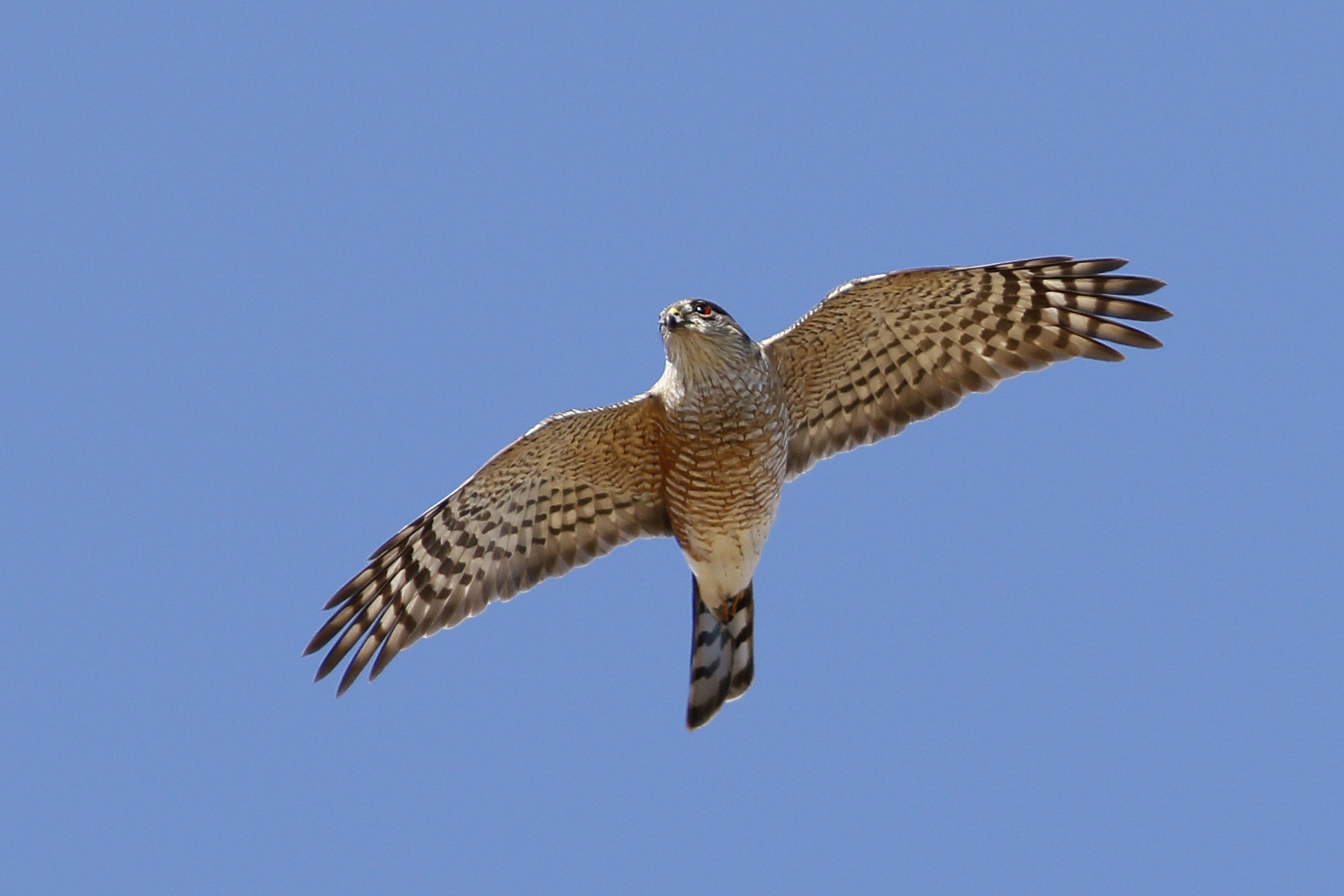By Ted Keyel
Linked paper: Feather mercury increases with feeding at higher trophic levels in two species of migrant raptors, Merlin (Falco columbarius) and Sharp-shinned Hawk (Accipiter striatus) by E.R. Keyel, M.A. Etterson, G.J. Niemi, D.C. Evers, C.R. DeSorbo, J.C. Hoffman, J.W. Nichols, Y. Li, and F. Nicoletti, The Condor: Ornithological Applications.
Observers count more than 60,000 raptors on average each fall at the Hawk Ridge Bird Observatory in Duluth, and it was my experiences as a hawk counter that first drew me to studying raptors as a master’s degree student at the University of Minnesota-Duluth. There had been a lot of research on mercury levels in birds that rely on aquatic-derived food webs such as Common Loons and Bald Eagles, but very little had been published on mercury in birds with terrestrial-derived food webs. We decided it would be a great project to identify baseline mercury concentrations in multiple species of raptors; we also evaluated the contribution of dietary sources to mercury accumulation by measuring the carbon and nitrogen stable isotope ratios in the birds’ tissues.
Traditionally, carbon stable isotope ratios have been used to determine what food-base an animal is consuming because the ratio of 13C to 12C is different for terrestrial-derived food webs than for aquatic-derived food webs. Similarly, the ratio of 15N to 14N in feathers can be used to determine the how high on the food chain an individual has been eating because the isotopic composition of tissues reflects the diet during the period of tissue growth and maintenance.
We measured mercury concentrations in 11 species of raptors caught at the Hawk Ridge Bird Observatory from 2009 to 2012. We also tested stable isotope ratios for the two species of raptors with the highest average mercury concentrations, Sharp-shinned Hawks and Merlins. While both species are usually considered to rely on terrestrial-derived food webs, we wondered if their high mercury levels might mean that their food webs could be more aquatic-derived than initially believed. For example, a raptor might prey upon a songbird that has fed on mosquitos, which have an aquatic larval form. However, our results showed that all individuals of both species were feeding in a primarily terrestrial-derived food webs. Our results suggest that individual Merlins and Sharp-shinned Hawks feeding on prey from higher levels of the food web accumulated higher concentrations of mercury.
For the final step in our project, we used a previously published model to estimate mercury concentrations in blood based on those measured in feathers in an attempt to estimate mercury risk to the sampled raptors. This analysis suggested that while some Merlins and Sharp-shinned Hawks were at moderate risk of adverse effects from mercury, most of the sampled birds were at negligible or low risk.
Total mercury concentrations in breast feathers from raptors sampled during their fall migration through central North America varied substantially within and among species. It is currently unknown whether mercury residues in North American raptors are increasing, decreasing, or stable, and ongoing monitoring is essential to detect changes in these levels over time and to detect any regional variation.
